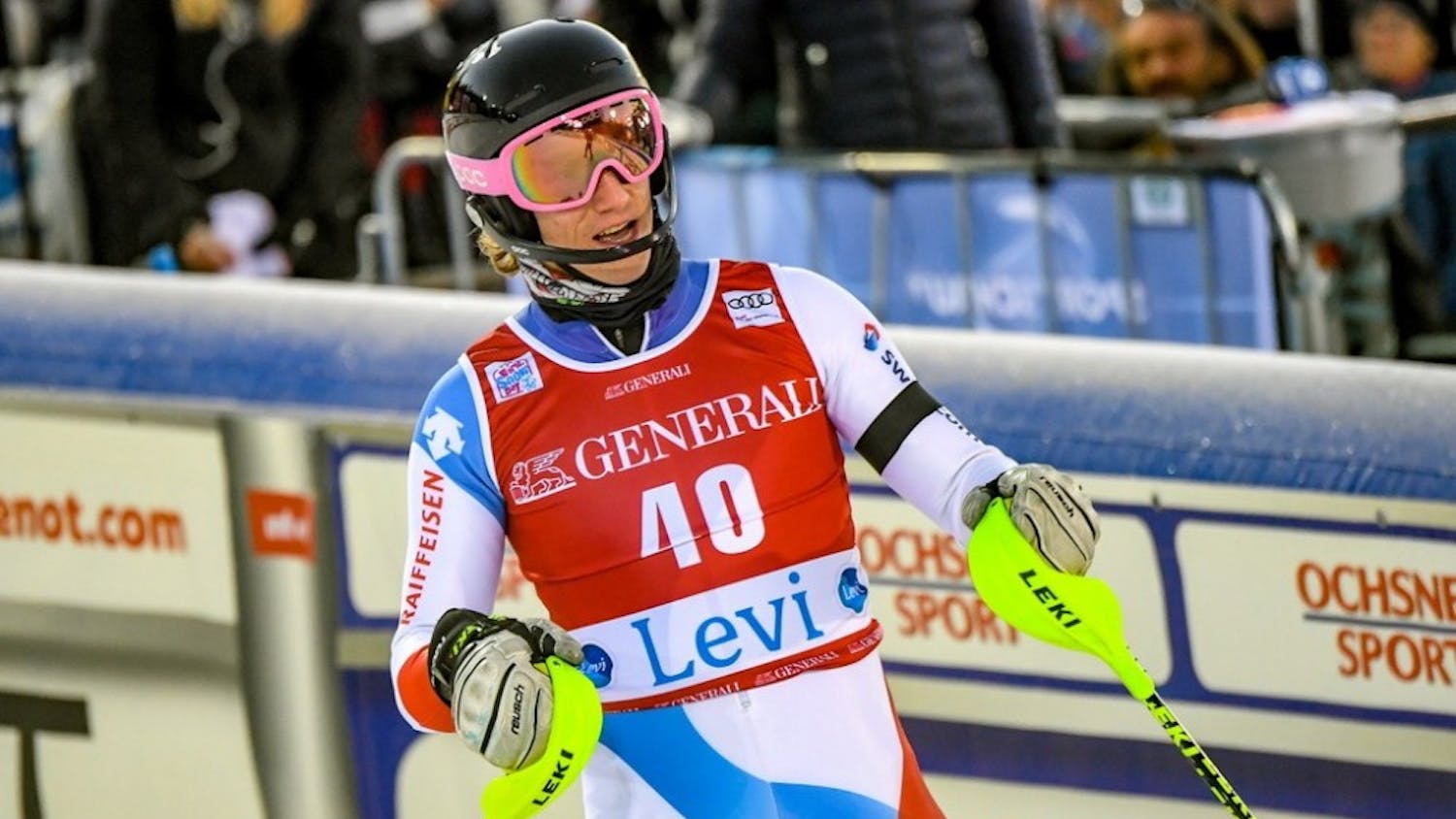The archaeological excavation outside of Baker-Berry Library has come to a close, and buildings and grounds have filled the holes, following a more than two-week dig that involved Dartmouth students, professors and community volunteers. The team found a range of artifacts, from false teeth to a gold ring to a bone-handled knife.
Spanning approximately 100 years of 18th-century history, the excavation offered an excellent window into a slice of the College’s history, said anthropology professor Jesse Casana, who supervised the dig alongside postdoctoral scholar Heather Rockwell.
The team dug in two locations in front of Baker-Berry Library. The main digging site was the location of a privy — an old-fashioned toilet — which Casana estimated was built in 1786, at the same time as the construction of what was then the home of the Ripleys, a local family.
The dig was scheduled to conclude the weekend of June 15, but Casana, anthropology professor Sabrina Billings and a few others continued on until they hit the stone base of the privy about a week later.
Casana explained that the historic privy makes for an especially interesting archaeological site due to the breadth of artifacts one might find at the bottom, like human waste, dropped items no one wanted to retrieve or household trash and kitchen scraps. Due to a lack of trash removal services, residents often dumped waste down the hole, Casana said.
One of the more exciting finds was a gold ring. Elise Laugier GR’21 said that gold does not tarnish in dirt, so regardless of the years spent in the ground, it appeared shiny upon discovery.
Casana said that the team also found food remnants such as animal bones, which will help determine what those living in the house ate. Casana noted that items such as coffee beans, peach pits and peanuts would have been imported at the time.
“In an 1800s context, pretty hoity-toity!” he said.
Also uncovered were glass medicine and liquor bottles, inkwells, shoe bits, a set of false teeth and tools such as a screwdriver and a knife with a bone handle.
In addition, the team found many bits and pieces of broken ceramic, which are helpful in dating each layer of the privy due to its distinctive characteristics tied to each decade’s style and explicit dates on some of the pieces, Casana said.
The diggers worked in two pits, each divided into quads, according to Katie Hoover ’22, a student volunteer who helped with the excavation. They paused every 10 centimeters to wait for the volunteers in each quadrant to reach the same depth, and then snapped a photo of what the floor of the pit and soil composition looked like before continuing digging.
Student intern Cali Almer ’20 said that the process began with cutting away the turf and rolling the cut squares, which the College preserved in order to replace following the excavation. The diggers then shoveled away the dirt at the top layer, moving to trowels and brushes as they dug deeper and began to find larger artifacts. Once removed, the dirt was sifted through screens to look for any smaller items not apparent at first examination, according to Almer.
The dig coincided with graduation as well as various reunions. Hoover said that since the site was in such a high-visibility area, many curious onlookers asked the student volunteers questions. Casana added that he would often encourage them to sign up to volunteer, and they would return to help dig.
Student volunteer Andra Pantelimon ’22 said she enjoyed interacting with passersby, such as a curious security officer and a fourth-grade class trip from the local grade school who came to visit the site.
At least 30 student volunteers, College staff, alumni on campus for graduation and reunions and local community members joined College faculty and student interns in the excavation process. Some dug for just a day, while others stayed around it out for two weeks of the excavation process.
Many had no archeology experience at all. Almer said that student interns were in charge of briefing volunteers each morning regarding the history of the site as well as basic archaeological techniques. Hoover said that student volunteers served as point-people when less-experienced volunteers had questions regarding the excavation process, such as what to do if one person dug at a different speed than the others in the same plot.
Other volunteers had more experience, whether from working on digs casually or formally as an archaeologist. Almer said that as often as she helped volunteers, the volunteers taught her. She noted that one group of volunteers from the New Hampshire Archeology society provided advice to students less-experienced in the practice of archaeological digs, like herself.
Laugier and Casana and his students used a Ground Penetrating Radar system to identify the best digging locations on Dartmouth’s campus. The system, acquired by Dartmouth’s spatial archaeometry lab in 2017, works by sending radar waves into the ground. If it hits any features different than the soil surrounding them, the waves bounce back. This data can be used to generate maps of what might lie below the surface, which can help inform where to best dig.
Laugier said that members of the lab ran the system across the ground all over campus, including the most promising site on the Baker-Berry lawn. She said that the two most striking anomalies they noticed on the radar-generated map were in the same area as buildings in historic maps of the lawn.
Casana added that radar can be useful in narrowing the possible digging site, in order to minimize the destruction inherent in archeology.
“Archeology is a destructive process,” said Casana, emphasizing that technology like GPR helped to minimize the impact of the dig on the surrounding environment.


